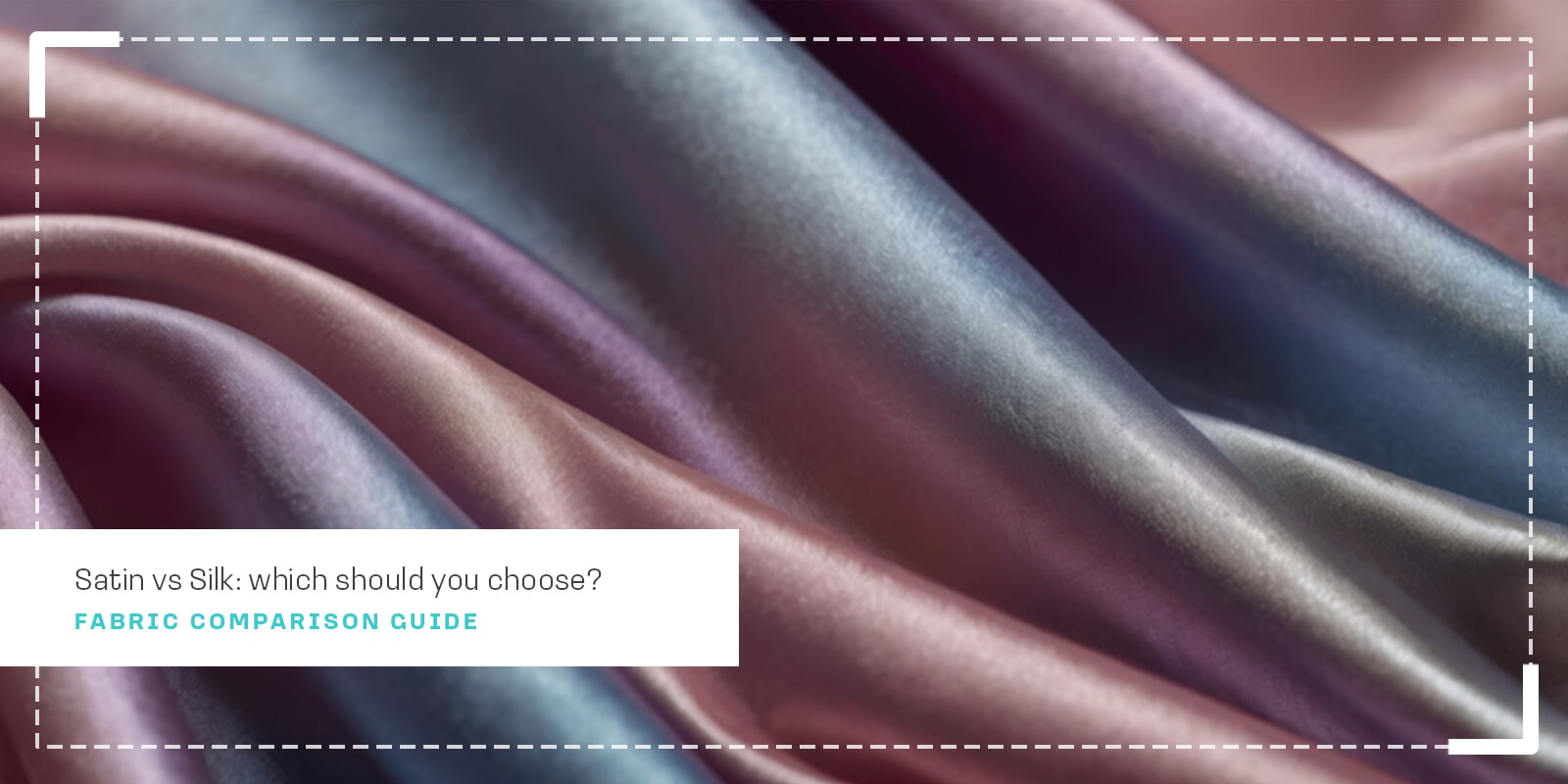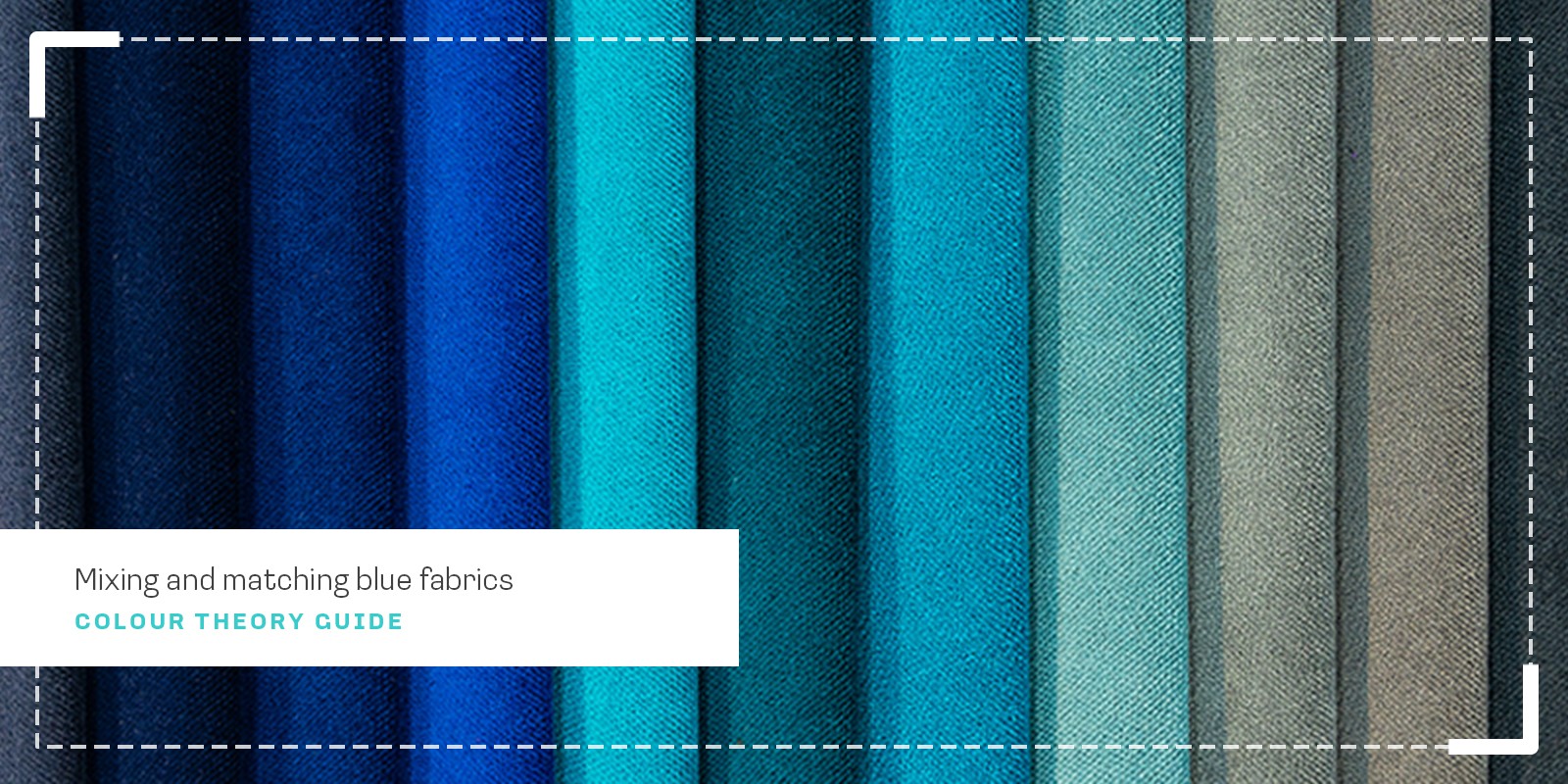Satin vs Silk: Which Fabric Should You Choose?14 January 2025
When browsing fabrics for your next project, you might find yourself wondering whether to choose satin or silk. While many people search for "silk vs satin," it's worth noting that satin isn't actually a fibre like silk - it's a weave pattern that can be made from various materials, including silk itself. Let's break down these key differences right away: Quick Comparison:
Both fabrics offer that coveted smooth, lustrous finish that's perfect for special occasion wear, bridal projects, and luxury home décor. Your choice between the two will largely depend on your specific project needs, budget and the amount of care you're willing to invest in maintenance.
Clothing ApplicationsEvening WearFor evening wear, both fabrics create elegant garments but serve different needs. Polyester satin offers durability and easy care - ideal for frequently worn cocktail dresses or special occasion outfits. Pure silk provides unmatched luxury but requires more maintenance, making it perfect for high-end formal wear and special events. 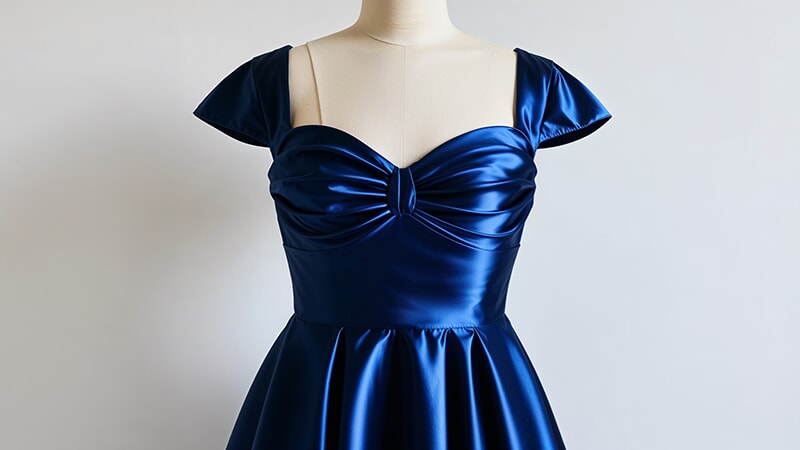 Bridal WearThe bridal industry frequently uses both options:
Casual ClothingWhile silk has traditionally been used for luxury daywear, modern satin material has made the lustrous look more accessible for everyday pieces:
Home Decor UsesBeddingSilk bedding has gained popularity for its natural properties and luxurious feel. The fabric's ability to regulate temperature and reduce friction makes it particularly beneficial for hair and skin care. With costs ranging from £80-200+ per pillowcase, it's often reserved for master bedrooms and special spaces. Its hypoallergenic properties make it ideal for those with sensitive skin, though the delicate washing requirements need consideration. Satin bedding provides many similar benefits at a more accessible price point (£20-50 per pillowcase). Polyester satin offers excellent durability, making it ideal for daily use and guest rooms. While it may not match silk's temperature regulation, it excels in easy care and colour retention. Machine washable options make it practical for families and regular use. 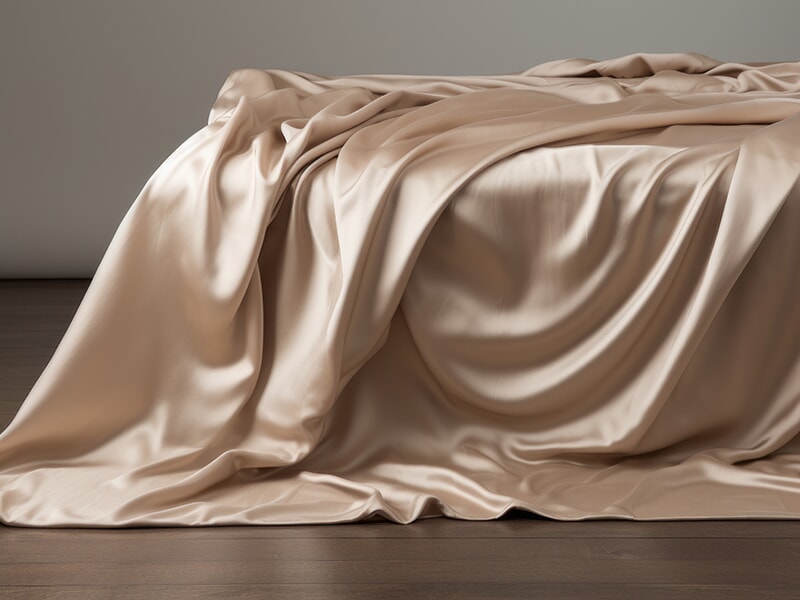 UpholsteryChoosing between silk and satin for upholstery depends on the room's purpose. Silk upholstery creates an undeniable luxury statement but requires careful placement. It's best suited for formal spaces away from direct sunlight and heavy use. The stunning visual depth comes with specific care needs - professional cleaning is usually required, and the fabric often needs backing for additional strength. Satin upholstery, particularly in polyester, offers practical benefits for everyday spaces. Its enhanced durability and fade resistance make it suitable for family rooms and frequently used areas. The fabric maintains its appearance with standard care, offering better fade resistance and a wide range of colour options. Cost-effective and easier to maintain, it's an excellent choice for larger upholstery projects. Decorative ElementsBoth fabrics excel in different decorative applications. Silk curtains create unmatched elegance in formal rooms but typically need lining for protection from sun damage. They're perfect for formal dining rooms and sitting areas where their natural sheen can be appreciated. For cushions and throws, silk pieces add luxury to formal living spaces but are best reserved for special occasions. Satin provides versatility across various decorative uses. Its durability makes it ideal for everyday spaces, from window treatments to accent pieces. The fabric holds up well in regular use, making it perfect for children's rooms and family spaces. Satin curtains offer better natural fade resistance, while cushions and throws can withstand daily use while maintaining their appearance. 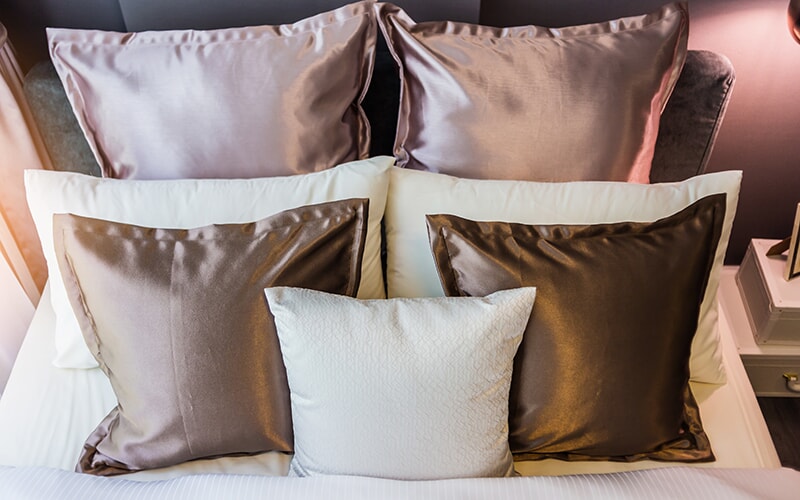 Technical & Practical ConsiderationsFiber and ConstructionNatural silk brings unique properties through its protein fibre structure. Each silk filament contains triangular prisms that reflect light, creating that characteristic subtle sheen. Satin, being a weave pattern rather than a fibre, can be produced from various materials. Most commonly, you'll find polyester satin, which achieves its shine through the weave structure - long floats on the surface create that glossy appearance. Performance CharacteristicsWhen working with silk, you'll notice its exceptional temperature-regulating properties. It can absorb up to 30% of its weight in moisture without feeling damp, making it comfortable year-round. Satin's performance varies significantly based on its fibre content. Polyester satin, while less breathable, offers superior wrinkle resistance and durability. Sustainability ConsiderationsSilk production has environmental implications, requiring careful cultivation of mulberry trees and silkworm farming. However, being biodegradable, it leaves minimal long-term environmental impact. Satin fabric, typically made from polyester, has a larger carbon footprint but offers longer durability and easier care, potentially reducing replacement frequency. Making Your ChoiceChoosing between satin and silk ultimately comes down to balancing your project needs, budget and maintenance commitment. Here's our practical guide to help you decide: Choose Silk When:
Choose Satin When:
Consider Your Project:
Final Tips:
Remember: There's no wrong choice - it's about finding the right fabric for your specific needs. Our customer service team is always available to help you make the best selection for your project.
|
